CELAB: Driving a Circular Economy for Label Release Liners
At CELAB, we are dedicated to advancing the sustainability of the self-adhesive labeling industry. A key part of this mission is enhancing the recyclability of paper release liners. By working together, we can create a more circular economy for our products—reducing waste and recovering valuable materials.
What Is a Paper Release Liner?
A paper release liner, commonly referred to as “label backing,” is the carrier on which pressure-sensitive adhesive-coated labels are delivered to the point of application. Once the label is applied to a product—such as a package, bottle, jar, or carton—the release liner is discarded, often ending up in landfills.
Release liners are primarily collected from industrial packaging and logistics warehousing sites. Some of their key attributes include:
- Material Composition: Predominantly made from bleached white kraft paper, ranging from 60 to 120 gsm.
- Silicone Coating: Each liner is coated with a thin, solid layer of silicone (1.0 to 1.50 gsm) on one side, which helps the label peel off easily. This silicone coating represents about 3% of the liner’s total mass and is chemically stable, meaning it remains intact during typical paper recycling processes.
Why Recycle Release Liners?
Recycling paper release liners offers a valuable opportunity to recover high-quality fibers and reduce waste. Instead of sending this by-product to landfills, it can be reprocessed and reintegrated into new paper production.
What You Need to Know as a Feedstock Manager:
The decision to accept paper release liners for recycling depends on several factors. Below, we outline both the commercial and technical viability to help you determine whether these materials can be efficiently processed in your facility.
Commercial Viability of Recycling Paper Release Liners
Cost Advantage:
Currently, many producers of paper release liner waste pay around $50 per ton to dispose of it. However, this material has the potential to generate revenue when recycled:
- Mixed Paper (Grade 54): Bale prices are typically above $50 per ton.
- Old Corrugated Containers (OCC, Grade 11): Bale prices generally exceed $100 per ton.
- Sorted Office Paper (SOP, Grade 37): Bale prices can be over $125 per ton.
By recycling release liners, mills can tap into this growing market for sustainable materials while potentially reducing disposal costs.
Availability:
There’s a significant supply of recyclable paper release liners in North America. According to the AWA report:
- In 2019, an estimated 247,000 tons of paper release liner was collectable—enough to fill about 1,235 Olympic-sized swimming pools.
- By 2024, this figure is projected to grow to approximately 272,000 tons annually, equivalent to the weight of over 1.5 million mid-sized cars, thanks to a steady 2% annual growth rate.
Technical Viability of Recycling Paper Release Liners
Paper release liners, even with their silicone coating, can be successfully recycled in various paper streams without negatively impacting the final product quality. Here’s what you need to know:
- Mixed Office Paper: Up to 10% of the material in Mixed Office Paper bales can be composed of paper release liners without issue.
- Household Paper Stream: Studies show that up to 10% of paper release liners can be processed alongside regular household paper waste.
- OCC Stream (Old Corrugated Containers): A substitution rate of 10% paper release liners has passed the OCC-E recyclability protocol with no significant negative impact on key recycling attributes.
- Higher Recycling Rates: Sustana Fiber, a leader in paper recycling, has successfully processed 20-30% paper release liners mixed with other office and mixed paper waste streams.
Contribute to a Circular Economy
With both commercial and technical viability confirmed, paper release liners present an excellent opportunity for recycling mills to recover valuable fibers, reduce environmental impact, and tap into new revenue streams. By incorporating these materials into your operations, your facility can play a key role in advancing the circular economy for the self-adhesive labeling industry.
If you’re ready to explore how your facility can contribute to the circular economy by recycling release liners, contact us today.
